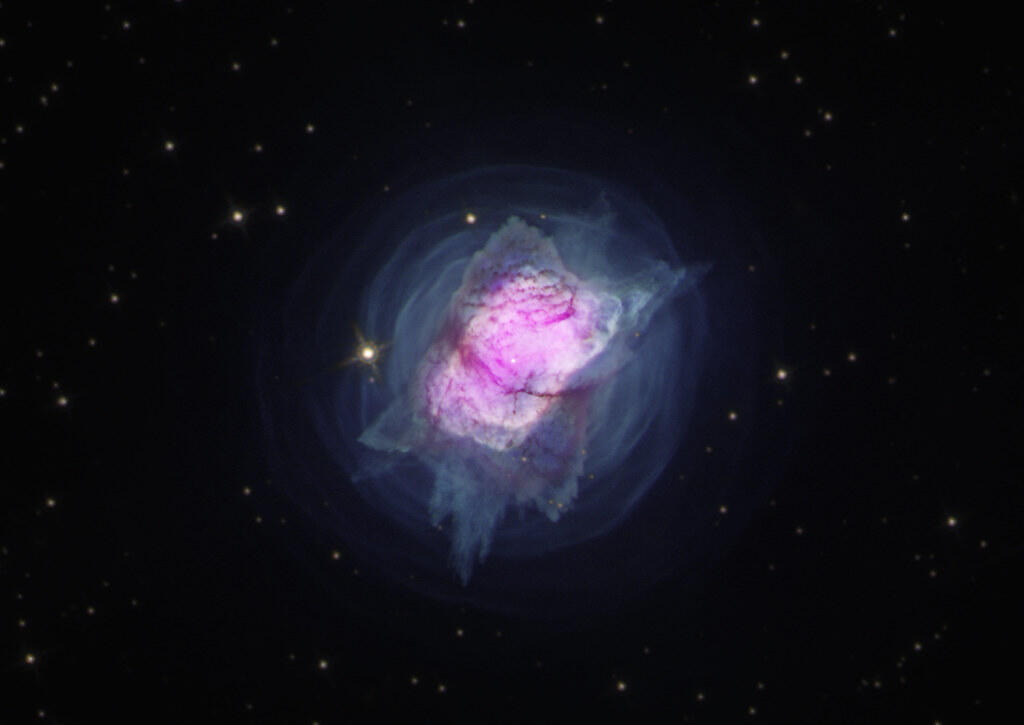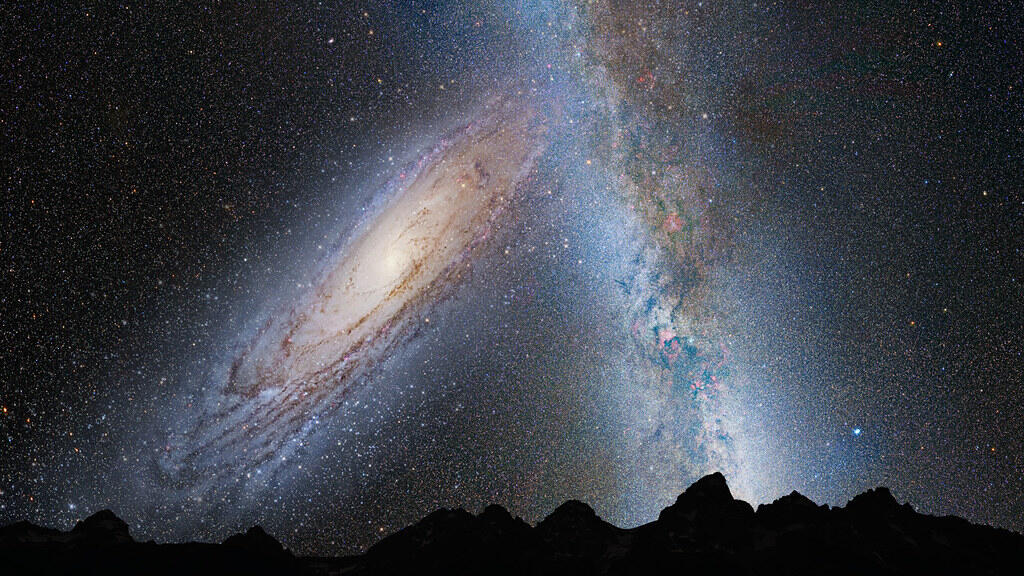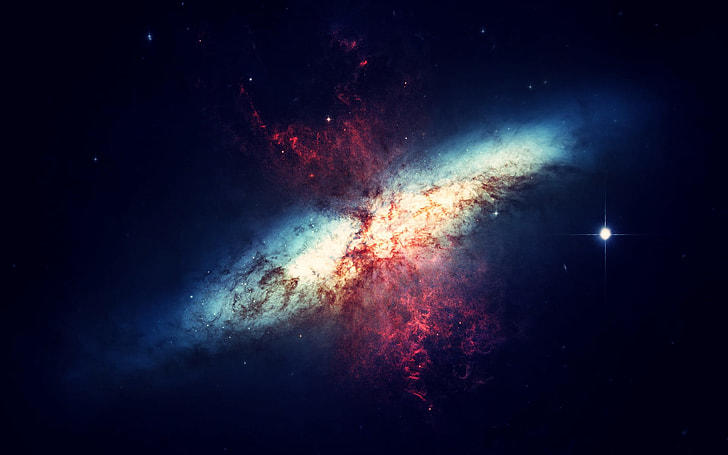We live in the Milky Way Galaxy, a vast spiral galaxy that resembles a giant rotating pinwheel. Formed around 14 billion years ago, it contains stars, planets, asteroids, and clouds of gas and dust known as nebulae. The Milky Way stretches about 100,000 light-years across, and our solar system is situated 26,000 light-years from its center. Everything within the galaxy orbits around this center, with the Sun and Earth taking 250 million years to complete one full revolution.
When we gaze at the night sky, most visible stars are part of the Milky Way’s spiral arms. Before telescopes, these stars appeared as a hazy white band, which ancient Greeks likened to a "river of milk." The Romans named it the Via Galactica, meaning "Milky Road," leading to the name we use today—Milky Way.

What is the Milky Way Galaxy?
The Milky Way is our vast home galaxy, stretching over 100,000 light-years in diameter. It is a barred spiral galaxy featuring a bright central bar and surrounded by a halo of stars, gas, and dust. When we observe the night sky, the glowing band of light comes from billions of stars within the Milky Way. This galaxy, formed by merging smaller galaxies, got its name from ancient myths describing its milky appearance. Despite centuries of study, its mysteries, like dark matter and the supermassive black hole at its center, Sagittarius A*, continue to puzzle astronomers.
Our solar system lies within the Orion Arm, approximately 27,000 light-years from the galaxy’s core.
Major Components of the Milky Way
The Milky Way consists of various stellar and non-stellar elements, from stars to gas clouds. Here are its key components:
Globular Clusters
Globular clusters are large, spherical collections of stars, with the Milky Way containing over 150 such clusters. They form a halo around the galaxy and are densely packed toward its center. These clusters are among the oldest structures, and their distribution mirrors the patterns seen in elliptical galaxies.
Open Clusters
Open clusters are smaller, less dense groups of stars found within the galactic plane, intermixed with the system’s stars, including our Sun. They are looser in appearance than globular clusters and represent younger star formations.
Stellar Associations
These are very loose, young star groupings that share a common origin but aren’t tightly bound by gravity. Stellar associations are found only in regions where star formation is ongoing, typically within the galaxy’s spiral arms. The brightest members are young O and B stars, with luminosities millions of times greater than the Sun’s. Despite their brightness, stellar associations have relatively low mass, ranging from a few hundred to a few thousand solar masses.
Moving Groups
Moving groups consist of stars with shared motions, sometimes forming noticeable clusters and sometimes scattered across the galaxy. These groups range from gravitationally bound clusters to widely spread stars sharing common motion. Notable examples include the Hyades, Pleiades, Ursa Major, and Scorpius-Centaurus groups.

Nebulae
Nebulae are clouds of gas and dust scattered throughout the galaxy. The brightest are emission nebulae, which glow due to ionized gases excited by ultraviolet light from hot stars. These nebulae, primarily composed of ionized hydrogen, are also called H II regions and are often found in regions of star formation.
Planetary Nebulae
Planetary nebulae, although resembling other nebulae, represent a late stage in the stellar life cycle. They are found throughout the disk and inner halo of the galaxy, with over 1,000 known examples. Unlike H II regions, planetary nebulae are remnants of dying stars and are distributed more evenly throughout the galaxy.
Dust Clouds
Dust clouds are concentrated along the Milky Way’s plane, blocking light and obscuring distant objects. Though dust is spread throughout the galaxy, it is most prominent in the spiral arms, particularly on their inner edges. Some of the densest dust clouds, known as Bok globules, are compact regions where star formation occurs.
Planets in the Milky Way
The tiny blue planet we call home is just a small part of the vast Milky Way Galaxy, which spans 100,000 light-years across and 1,000 light-years thick. While scientists have only documented around 5,000 planets so far, various advanced methods enable them to make educated guesses about the galaxy's total number of planets.
A decade ago, NASA estimated there were about 100 billion stars in the Milky Way, with at least one planet per star. Recent studies, however, suggest the star count could be closer to 200 billion, which would mean a similar increase in the number of planets. Given that our solar system alone has eight planets, the true number could be far greater.
The Milky Way likely hosts between 100 to 200 billion planets, with potentially many more waiting to be discovered.
Interesting Facts About the Milky Way
Here are 15 fascinating facts about the Milky Way Galaxy. These facts showcase the immense size, complexity, and evolving nature of the Milky Way Galaxy, where our tiny solar system is just one of countless systems.
Barred Spiral Galaxy
The Milky Way is not just a simple spiral galaxy; it belongs to a specific class called a barred spiral galaxy. This means it has a central bar-shaped structure composed of stars. The spiral arms of the galaxy extend from the ends of this bar. Barred spiral galaxies make up about two-thirds of all observed spiral galaxies in the universe. This central bar is thought to influence the motion of stars and gas, funneling material towards the core and possibly aiding in star formation and the growth of the central black hole.
Massive Size
The Milky Way spans approximately 100,000 light-years in diameter. To put that into perspective, a light-year is the distance light travels in one year—about 5.88 trillion miles (9.46 trillion kilometers). So, the Milky Way is vast beyond imagination, containing countless stars, planets, nebulae, and other celestial objects. Its disk, where most of its stars and matter are located, is about 1,000 light-years thick in most areas but bulges more near the center.
Hundreds of Billions of Stars
The Milky Way contains an estimated 100 to 400 billion stars, though the exact number is unknown because many stars are obscured by dust, and the galaxy is so large that it’s difficult to count them all. Stars in the Milky Way vary widely in age, from those forming in nebulae today to ancient stars that are nearly as old as the galaxy itself.
Planet Count
While scientists have only directly observed about 5,000 planets (known as exoplanets) in the Milky Way, estimates suggest there could be 100 to 200 billion planets orbiting the galaxy’s stars. This estimate arises from statistical analysis of the stars we’ve studied in depth. Some systems have more planets than ours, while others may have fewer or none. The diversity of planetary systems in the Milky Way likely includes countless worlds that could be completely unlike anything in our solar system.
Our Solar System's Location
Our solar system is located in a relatively quiet part of the galaxy known as the Orion Arm, a minor spiral arm or spur between two larger arms (the Sagittarius and Perseus arms). We are about 27,000 light-years from the galactic center, meaning that we are far from the dense, energetic region near the core, where conditions are far more extreme, with intense radiation and numerous stars packed close together.
The Galactic Year
The Sun, along with the entire solar system, orbits the center of the Milky Way. One full orbit takes about 250 million years to complete, a period known as a "galactic year." During this time, Earth and the solar system travel through different parts of the galaxy, sometimes passing through denser star regions and other times through more sparse areas. This journey may affect life on Earth over extremely long timescales, possibly even influencing mass extinctions or ice ages.
Central Supermassive Black Hole
At the core of the Milky Way lies a supermassive black hole known as Sagittarius A*. This black hole is roughly 4 million times the mass of the Sun and has a strong gravitational influence on the surrounding stars and gas. Despite its massive size, it is relatively quiet compared to the active black holes found in some galaxies. It is surrounded by a dense cluster of stars and likely grew over time by accreting material and merging with smaller black holes.
The Milky Way is Still Growing
The Milky Way continues to grow by absorbing smaller galaxies. One such example is the Sagittarius Dwarf Galaxy, which is currently merging with the Milky Way. The Milky Way’s size and mass have increased over billions of years as it cannibalized these smaller galaxies. This process is part of the natural evolution of galaxies, and over time, the Milky Way will continue to change its shape and structure.
Star Formation
Stars in the Milky Way are born in vast clouds of gas and dust called nebulae, which are found mainly in the galaxy's spiral arms. In these regions, gravity causes gas to collapse, forming new stars. One of the most famous star-forming regions is the Orion Nebula, a bright, nearby region of intense star birth visible to the naked eye. These nebulae are the nurseries of stars, giving rise to clusters of young stars that will eventually spread out across the galaxy.
Dark Matter
The Milky Way's mass is much larger than what can be accounted for by its visible stars, gas, and dust. About 90% of the galaxy’s mass is thought to be dark matter, a mysterious and invisible substance that does not emit, absorb, or reflect light. Dark matter can only be detected through its gravitational effects on visible matter. Understanding dark matter is one of the greatest challenges in modern astrophysics, as it is believed to make up a significant portion of the universe's total mass.
The Milky Way's Halo
Surrounding the Milky Way is a vast halo of dark matter, stars, and globular clusters. Globular clusters are dense, spherical groups of stars that orbit the galaxy's core. These clusters are some of the oldest objects in the galaxy, with ages approaching 13 billion years. The halo extends far beyond the visible parts of the Milky Way and plays an important role in maintaining the galaxy's gravitational structure.
Visible Band in the Night Sky
The Milky Way gets its name from the faint band of light we can see stretching across the night sky. This light comes from the dense concentration of stars, dust, and gas in the disk of the galaxy. Ancient cultures described this band as a river, a road, or spilled milk, leading to names like Via Lactea (Latin for "milky road"), which evolved into "Milky Way." The band is best seen from dark locations far from city lights, where it appears as a luminous stripe across the sky.
Relatively Young
At 13.6 billion years old, the Milky Way formed relatively soon after the Big Bang, which occurred 13.8 billion years ago. However, it has undergone many changes since its formation. Over its lifetime, the Milky Way has merged with smaller galaxies, formed new stars, and evolved into the complex structure we observe today.

The Andromeda Collision
The Andromeda Galaxy, the Milky Way’s closest large neighbor, is on a collision course with us. In about 4.5 billion years, the two galaxies will merge in a slow, dramatic event that will significantly reshape both galaxies. This galactic collision will not necessarily destroy individual stars or planetary systems, but it will alter the overall structure, forming a new galaxy sometimes called Milkomeda.
Orbiting Satellite Galaxies
The Milky Way is surrounded by numerous satellite galaxies, the largest of which are the Large and Small Magellanic Clouds. These galaxies are slowly being pulled toward the Milky Way by its gravity and are expected to eventually merge with it. Satellite galaxies are also sources of star formation, as the gas they bring into the Milky Way contributes to the birth of new stars.
The Milky Way: A Cosmic Masterpiece
The Milky Way is far more than just the galaxy we call home—it's a dynamic, ever-evolving cosmic structure filled with mysteries, from its billions of stars and planets to the invisible dark matter that dominates its mass. With regions teeming with star formation, a central supermassive black hole, and a future collision with the Andromeda Galaxy, the Milky Way is a living, breathing entity in the universe. As astronomers continue to explore and unravel its secrets, we are constantly reminded of our place within this majestic galactic expanse. The Milky Way is not just a backdrop to our lives, but a spectacular realm that holds the key to understanding the universe itself.















